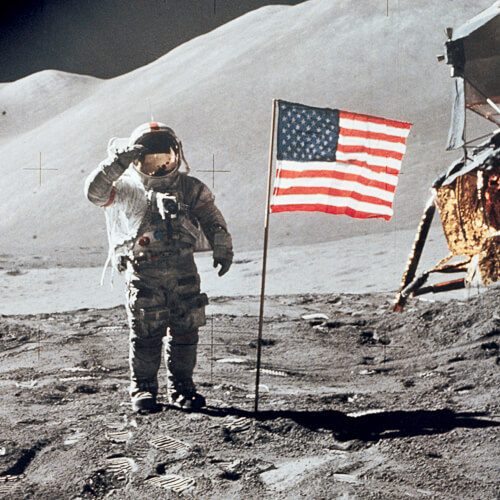NASA has given Nokia Bell Labs and Houston-based Intuitive Machines $14.1B to prepare to set up a 4G network on the moon.

Next time you can't get network downstairs, you might feel a bit better knowing NASA is putting a 4G network on the moon.
The US space agency is currently working towards building a lunar base by 2028, part of a Moon to Mars strategy which also includes crewed missions to the red planet by the early 2030s.
Figure 1:  One small step: Astronaut David R. Scott on the lunar surface during the Apollo 15 mission in 1971, just one year before the final mission in 1972.
One small step: Astronaut David R. Scott on the lunar surface during the Apollo 15 mission in 1971, just one year before the final mission in 1972.
(Source: NASA)
Historically, astronauts on the moon have used point-to-point radio communications. A 4G network would provide more reliable and longer-distance communication.
The network will allow real-time navigation over lunar geography, Bell Labs tweeted. (Incidentally, there already is a Google Moon.)
The network will also offer a way to control lunar rovers, as well as to stream high-definition video. So the next astronaut following in the footsteps of Neil Armstrong's "one small step" can livestream it with an iPhone.
Bell Labs, working with Houston-based space technology company Intuitive Machines, has received $14.1 million for the project – which eventually, like on Earth, will see the 4G network upgrade to 5G.
The funding is part of $370 million of contracts NASA awarded under its Tipping Point for new space technologies developed in the private sector.
When darkness falls
Upgrading the data rate available to science projects on the moon has attracted attention from scientists for years.
NASA and most other plans for human trips to the moon target the South Pole.
It is obscured from the near-constant sunlight on the rest of the moon, and as a result has craters which contain ice and other minerals in "cold traps."
But it is also obscured from Earth view for half of the 28-day lunar cycle, and requires lunar relay satellites.
There are advantages to working on the moon: There aren't trees, buildings (for now) or many competing signals.
On the other hand, there are extreme temperature and radiation to deal with, plus a launch and landing in which to be shaken and stirred.
The lunar network will use small cell tech, limited in range but smaller and less power hungry than Earth-based cell towers.
Want to know more about private networks? Check out our dedicated private networks content channel here on Light Reading.
In 2016, Bell Labs announced a demonstration of its F-Cell architecture, powered by a solar panel, which could then allow for 1 Gbit/s of data to pass through eight, 20 megahertz LTE channels.
Using higher spectrum bandwidth and more bands, and more antenna arrays, could improve this to tens of gigabits per second, said Bell Labs president Marcus Weldon.
Second time lucky?
From 1925 to 1996 Bell Labs was owned by AT&T, and scientists working in its laboratories in New York, and later New Jersey, developed the transistor, the laser, C, and Unix.
Nokia purchased the company in 2016. This is not the first launch attempt this way by the Espoo-based telecoms and electronics company.
In 2018 Nokia, together with Vodafone, Audi (which worked on the lunar rovers), and Berlin-based PTScientists, announced an effort to set up an LTE network at the site of the Apollo 17 moon landing, in December 1972 – the most recent.
It would have been part of the first privately funded moon landing, hitching a ride from Cape Canaveral on a SpaceX Falcon 9 rocket.
The project, which would have broadcast 4G over the 1800 megahertz frequency band, never quite got off the ground. But possibly having NASA behind the latest effort will give it a bit more oomph.
Responding to the news, a Twitter user called Prasad noted wryly, "here we still don't get proper 4G in non-metro parts of India...now we will have to go on the Moon to get 4G."
Related posts:
— Pádraig Belton, contributing editor special to, Light Reading
Read more about:
EuropeAbout the Author(s)
You May Also Like










